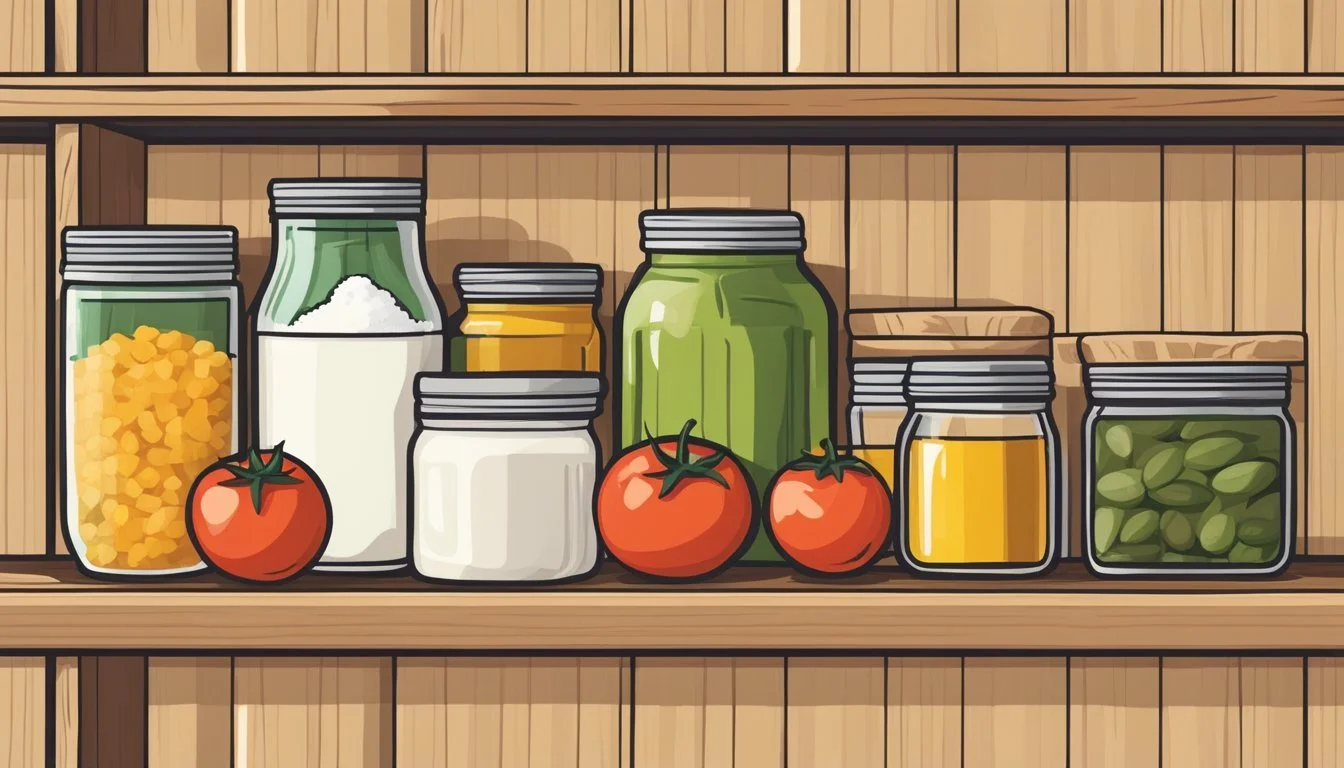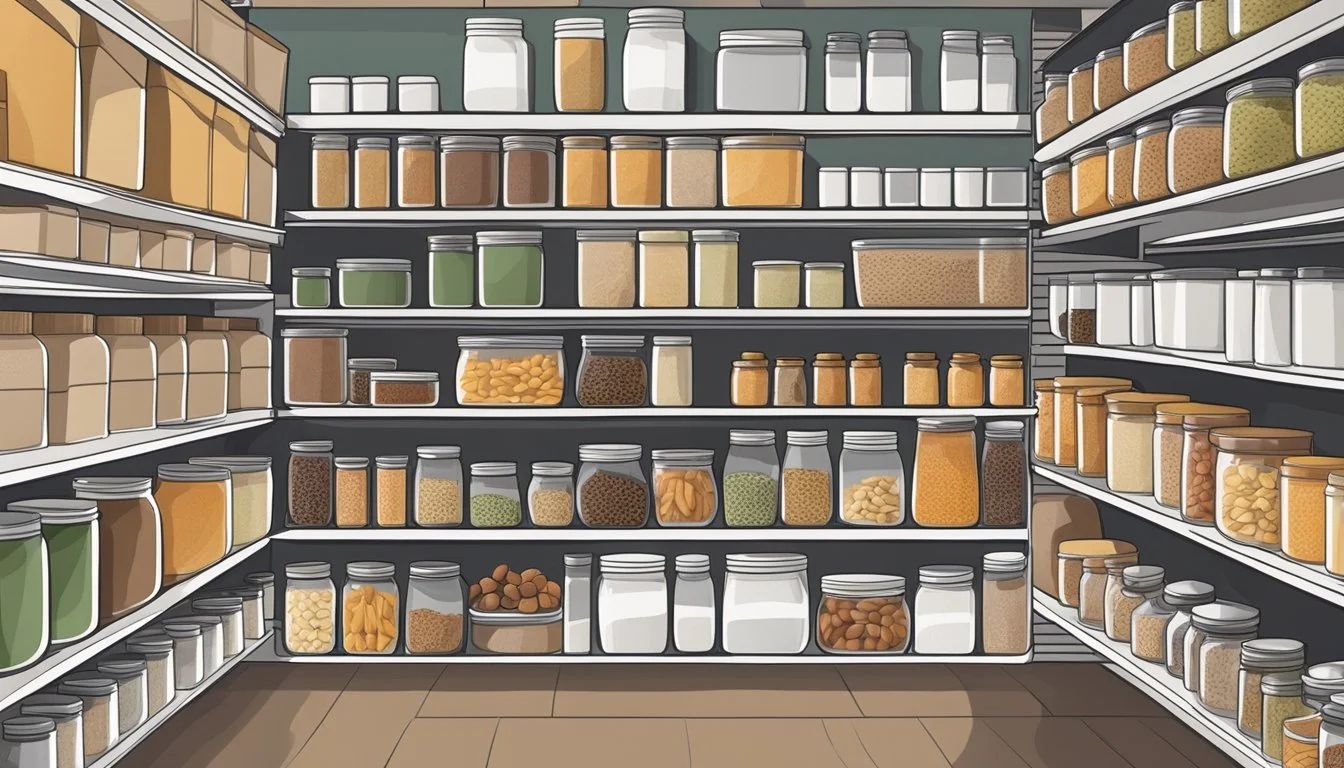10 Paleo Pantry Staples and Their Versatile Uses in Everyday Cooking
Discover > Healthy Living Through Food > 10 Paleo Pantry Staples and Their Versatile Uses in Everyday Cooking
Embarking on a paleo lifestyle hinges on the concept of returning to the dietary foundations of our ancestors, eschewing processed foods and sugars (how long does sugar last?) in favor of whole, nutrient-dense ingredients. A pantry tailored to the paleo diet not only simplifies meal preparation but also ensures that the principles of this way of eating are readily achievable. Staples like coconut aminos, a savory sauce offering a soy-free alternative, and almond flour (how long does almond flour last?) for grain-free baking set the foundation for versatile paleo recipes. Sweeteners are not forgotten, with options such as raw honey (how long does honey last?) and coconut sugar (how long does coconut sugar last?) replacing refined sugars to sweeten meals without artificial additives.
Understanding the importance of high-quality fats is crucial in a paleo kitchen, with choices like extra-virgin olive oil and coconut oil providing both health benefits and a rich, buttery flavor to dishes. Full-fat coconut milk, with its creamy texture, becomes a cornerstone ingredient for everything from curries to smoothies. To recreate the textures and richness often missing from dairy and grain-free diets, ingredients like tapioca flour (how long does flour last?) and nutritional yeast (how long does nutritional yeast last?) become invaluable, lending a cheesy flavor and thickening power to creamy sauces (What wine goes well with creamy sauces?) and soups. For those with a discerning palate, dark chocolate and assorted nuts (how long do nuts last?) and seeds (how long do seeds last?) can satisfy cravings for occasional treats while offering amazing sources of trace minerals and antioxidants.
By curating a selection of these paleo-friendly ingredients, individuals can transform their pantry into a hub of healthful culinary activity. Fresh vegetables and high-quality proteins paired with these pantry staples enable home cooks to create nourishing meals that align with the paleo philosophy. This way of stocking the kitchen supports a steadfast approach to eating well-balanced, wholesome foods that have stood the test of time.
Essential Paleo Pantry Staples
When adopting a Paleo lifestyle, having the right staples on hand can make meal prep simpler and enhance the taste and nutritional value of your dishes. Here are some must-have items that are versatile and compliant with a Paleo diet.
Coconut Butter
Coconut butter is made from the meat of the coconut and maintains a rich texture and flavor. It can be melted into coffee, spread on Paleo-friendly bread, or used in desserts.
Nutritional Yeast
Nutritional yeast is a significant source of B-vitamins and provides a cheese-like flavor, making it perfect for Paleo sauces, dressings, and as a topping for vegetables.
Raw Cacao Powder
Raw cacao powder offers a potent dose of antioxidants and can be used to make Paleo-friendly brownies, truffles (What wine goes well with truffles?), and smoothies.
Tahini
Tahini (how long does tahini last?), a paste made from sesame seeds (how long do sesame seeds last?), is ideal for hummus recipes, dressings, and as a dip. Its creamy texture and nutty flavor enrich Paleo dishes.
Ceylon Cinnamon
Known as "true" cinnamon, Ceylon cinnamon has a subtle sweetness ideal for flavoring baked goods, smoothies, and tea without the need for added sugars.
Ghee
Clarified butter, or ghee (how long does ghee last?), is lactose-free and has a high smoke point, making it suitable for cooking at high temperatures. Its buttery flavor enhances meats, veggies, and eggs.
Coconut Aminos
A soy-free alternative to soy sauce (how long does soy sauce last?), coconut aminos add a savory umami flavor to stir-fries, marinades, and sauces without processed additives.
Canned Coconut Milk
Canned coconut milk (how long does canned coconut milk last?) is a staple in paleo kitchens for its versatility. Use it in curries, soups, smoothies, or as a dairy substitute in many recipes.
Raw Honey
A natural sweetener, raw honey is perfect for sweetening Paleo treats, drizzling over fruit, or adding to teas. It's a healthier alternative to refined sugars.
Assorted Nuts & Seeds
Nuts (What wine goes well with nuts?) and seeds are powerhouses of healthy fats, proteins, and trace minerals. They work well as a snack, ground into flour for baking, or as a base in homemade nut butter.
Macadamia Nuts
Delight in the buttery richness and unique flavor profile of macadamia nuts.
Raw Cashews
Versatile and creamy, raw cashews add a luscious texture to both sweet and savory dishes.
Flax Seeds
Packed with omega-3 fatty acids and fiber, flax seeds are a nutritional powerhouse.
Walnuts
Enjoy the earthy taste and satisfying crunch of walnuts (how long do walnuts last?), a great source of heart-healthy omega-3s.
Sunflower Seeds
Nutty and nutritious, sunflower seeds are a delicious addition to salads, yogurts, or as a quick snack.
Almonds
A classic choice, almonds (how long do almonds last?) offer a balance of protein, healthy fats, and a satisfying crunch.
Brazil Nuts
Rich in selenium, Brazil nuts add a nutrient boost and a distinct taste to your nut mix.
Pumpkin Seeds
Also known as pepitas, pumpkin seeds (how long do pumpkin seeds last?) contribute a mild, nutty flavor and a dose of essential minerals.
How To Stock Your Paleo Pantry
When transitioning to a Paleo diet, one's pantry requires a transformation to accommodate whole, unprocessed foods. Eliminating items with gluten, grains, refined sugars, and dairy is the first step. Instead, pantries should be filled with wholesome alternatives that uphold Paleo principles.
Essential Paleo Pantry Staples:
Coconut Flour (how long does coconut flour last?):
A versatile flour for gluten-free baking; absorbs more liquid than other flours.
Almond Flour:
Ideal for baking; provides a nutty flavor and moist texture.
Coconut Oil:
A cooking fat with a neutral flavor; also adds a subtle coconut taste.
Full-fat Coconut Milk:
Used in creamy sauces, curries, and as a dairy substitute.
Raw Honey:
A natural sweetener for baking or to sweeten beverages.
Coconut Aminos:
A soy sauce alternative; great for savory sauces and stir-fries.
Assorted Nuts & Seeds:
Provide crunch and nutrition; ideal for snacking or as salad toppings.
Canned Coconut Milk:
Convenient for creating decadent, dairy-free dishes.
Nutritional Yeast:
Adds a cheesy flavor to Paleo dishes without dairy.
Raw Cacao Powder:
For chocolate flavor in smoothies and Paleo desserts.
Incorporating fresh vegetables and perishable items like sweet potatoes into the kitchen is also crucial, as they are foundational to countless Paleo recipes. Almond butter (how long does almond butter last?) and other nut butters serve as bases for dressings and desserts, while coconut cream (how long does coconut cream last?) provides richness to dishes without dairy. Natural sweeteners like coconut sugar and maple syrup (how long does maple syrup last?) can replace white sugar to adhere to Paleo guidelines.
For those with a penchant for the occasional treat, opting for dark chocolate with high cocoa content and minimal additives is in line. Cooking staples such as extra-virgin olive oil offer a buttery flavor, whereas apple cider vinegar (how long does apple cider vinegar last?) and balsamic vinegar (how long does balsamic vinegar last?) bring acidity to salads and marinades.
By keeping these items on hand, one ensures the ability to craft flavorful, health-conscious meals that align with the Paleo lifestyle.
Reading Labels and Avoiding Non-Paleo Items
When embarking on a paleo diet, understanding how to read food labels is crucial to avoid consuming non-paleo ingredients. The paleo diet emphasizes whole, unprocessed foods, and certain items must be avoided, including refined sugar, grains, legumes, and most dairy products. To ensure pantry items align with paleo principles, consumers must become vigilant label readers.
Sugars: Avoid products with refined sugar, white sugar, or high fructose corn syrup (how long does corn syrup last?). Instead, look for natural sweeteners like raw honey, coconut sugar, or maple syrup.
Flours: Opt for coconut flour, almond flour, or cassava flour (how long does cassava flour last?) over traditional grain flours.
Fats and Oils: Replace vegetable oils and margarine with coconut oil, ghee, or extra-virgin olive oil for their neutral or buttery flavors.
Additives: Many canned or packaged goods contain preservatives or artificial additives. Scan for canned coconut milk with only coconut and water, no guar gum (how long does guar gum last?) or BPA in the lining.
Condiments/Sauces: Coconut aminos serve as a soy-free alternative to soy sauce, and many are now using Primal Kitchen products for paleo-friendly sauces and dressings.
Here is a concise list of ingredients to check for on labels:
Paleo-Friendly Ingredients:
Raw Honey
Coconut Sugar
Coconut & Almond Flour
Apple Cider Vinegar
Coconut Aminos
Dark Chocolate (70%+)
Full-Fat Coconut Milk
Extra-Virgin Olive Oil
Balsamic Vinegar
Nutritional Yeast
Non-Paleo Ingredients to Avoid:
Corn Syrup
White Sugar
Wheat Flour
Artificial Flavors
MSG
Milk Chocolate
Dairy Milk
Hydrogenated Oils
Added Sugars & Caramel Color
Artificial Cheese Flavors
Cooking and baking paleo recipes often call for the use of food processors to blend nuts and seeds into nut butter or to create creamy sauces without dairy. Lastly, users can indulge in occasional treats like dark chocolate or dairy-free desserts with tapioca flour (how long does tapioca flour last?), keeping in mind to check for added non-paleo ingredients.
Creative Uses for Paleo Pantry Staples
When designing a paleo pantry, the versatility of each ingredient is crucial. This section explores how to make the most of paleo staples, turning them into delicious meals, baked goods, and snacks.
Building Flavorful Paleo Meals
Paleo cooking focuses heavily on the purity and quality of ingredients. Coconut aminos and fish sauce (how long does fish sauce last?) serve as excellent replacements for soy sauce, imparting a deep umami flavor without the soy and gluten found in traditional options. Both can be used in stir-fries or as a base for savory sauces. Speaking of sauces, full-fat coconut milk is a staple for creating creamy textures without dairy; it's ideal for curries or soups. Apple cider vinegar and balsamic vinegar lend a tangy twist to salad dressings and marinades, and a dash of garlic powder, curry powder, or Ceylon cinnamon can elevate the taste of fresh vegetables and meats.
Paleo Baking Essentials
Almond and coconut flours serve as the foundation for paleo baking, offering a nutrient-dense alternative to grain-based flours. Almond flour works well for denser, moist baked goods and crusts, while coconut flour is highly absorbent, requiring more liquid to ensure a light texture. For recipes that need a bit of stretch, tapioca flour is a go-to gluten-free option. Pair these flours with raising agents like grain-free baking powder (how long does baking powder last?), and sweeten your treats naturally using maple syrup, raw honey, or coconut sugar. A food processor is an indispensable tool for combining nuts and dates into pie crusts or bliss balls.
Healthy Paleo Snacks and Treats
Stocking up on paleo-friendly snacks is essential to stay loyal to a paleo diet. Dark chocolate (look for high cacao content and minimal additives) and coconut butter can be combined to make rich and satisfying chocolate bark. Almond butter and coconut cream, when mixed with a bit of maple syrup or raw honey, create a flavorful dip for apple slices or homemade paleo granola bars (how long do granola bars last?). For a quick and nutritious snack, blend various nuts and seeds, such as pumpkin and sunflower seeds, for a homemade trail mix (how long does trail mix last?) brimming with trace minerals and healthy fats. Nutritional powerhouses like raw cacao powder and tahini can be utilized in smoothies or drizzled over fruit and nuts for an antioxidant-rich treat.





